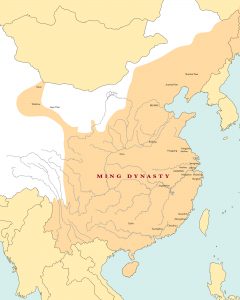In the late 1940s, the ambition of the young scientist, Francis Crick, in discovering the secret of life started as soon as he began working with X-ray crystallography during the time he was at Cambridge University.1 In the early 1950s, a young American post-doctoral student with the name of James Watson collaborated with Francis Crick to investigate the DNA molecule. The two scientists badly wanted to find out the structure of the molecule and how it worked, because they thought that if they understood the mysteries of DNA, that could help solve many questions in science, including the one that Watson had: is the DNA molecule the reason for genetic inheritance? Is DNA responsible for passing traits on to an offspring? Therefore, during the 1950s, Watson and Crick began their investigation into this phenomenon of genetic inheritance at Cambridge University.2

Meanwhile, in London at King’s College, Rosalind Franklin and Maurice Wilkins were performing an investigation studying DNA by using the X-ray crystallography technique, which consists of beaming the X-ray through the DNA molecule, creating a crystalline sample. Franklin’s work on DNA clearly was the missing piece to the completion of Watson and Crick´s research into the nucleic acid—the DNA double-helical structure. The first image of DNA was taken in the early 1950s from the work of Rosalind Franklin and was crucial for the discovery of the Watson-Crick structure. The image of the DNA, named “photo 51,” showed the molecule in the form of an “X”, which was a remarkably important clue for Watson and Crick in their discovery of the double-helix structure.3
Watson and Crick were leading the race for the discovery of the DNA molecular structure and composition, among other groups of researchers. Watson and Crick were convinced that if they succeeded in finding the secrets of the DNA molecule (the structure of DNA), then the deoxyribonucleic acid role in heredity would be revealed and other questions in biology and biomedicine would be answered.
In 1886, the Monk Gregor Mendel had discovered the real biological genetic inheritance, which he named Mendelian Inheritance, a process that consists of passing traits from two parents to an offspring.4 However, he didn’t know why those traits were passed on from generation to generation, nor did he know what the genes were composed of. After the Mendel Inheritance Model, many scientists, including James Watson, wondered what allowed this phenomenon (passing traits from generation to generation) to happen. It wasn’t until 1943 when researcher Oswald Avery proved that a particular nucleic acid, known as DNA, was the carrier of genetic information, and so the crucial role of DNA in determining genetic inheritance was exposed. Unfortunately, no scientist knew how this process worked until the early 1950s, when Francis Crick and James Watson started looking for answers.

Natural scientists by the 1850s already knew that DNA was composed of chemical components consisting of phosphate, carbon sugar, and a nitrogenous base, including four amino acids (adenine, thymine, cytosine, and guanine).5 However, the structure was not yet established, so the information about the chemical components that composed DNA were very efficient for Watson and Crick, since their research consisted more on analyzing and collecting data that already existed rather than experimenting in the lab. Thus, they put all the relevant information together until they finally found the DNA structure.
But it was not until the year 1953 that James Watson and Francis Crick could announce their model of DNA’s double helix while they were in England, hanging out in a famous pub among researchers called The Eagle. Crick told each of the guys in the pub, “We have found the secret of life.”6

Indeed! Crick and Watson found the secret of, and they constructed a structure of, the molecular model which represented the now-known chemical and physical properties of the DNA.7 In this manner, solving the pulse of the molecular structure of DNA steered Watson and Crick to the right direction for the answer to their biggest question—is the DNA molecule the reason for genetic inheritance?
In fact, Crick and Watson found that DNA is the main reason for genetic inheritance; ultimately, the genetic material that is transmitted from a parent to an offspring is located in the deoxyribonucleic acid (DNA) in the nucleus of the cells.8 The discovery of DNA´s double-helical structure has had an enormous impact on the fields of biology and biomedicine research. James Watson, Francis Crick, and Maurice Wilkins were awarded with the Nobel Prize in Medicine in the year 1962. Sadly, the researcher Rosalind Franklin did not receive this prize regardless of her contribution to this discovery.
- Michael Thomas, “Watson and Crick: The Discovery of the DNA Structure,” April 2018, StMU History Media, https://stmuhistorymedia.org/watson-and-crick-the-discovery-of-the-dna-structure/. ↵
- The Gale Encyclopedia of Science, 2004, s.v. “Double Helix.” ↵
- Shirley Chan and Susan Conova, “The DNA molecule is shaped like a twisted ladder,” 2011, DNA from the beginning (website), http://www.dnaftb.org/19/bio-3.html. ↵
- James Morris et al., Biology: How Life Works (New York: Macmillan Learning, 2016), 55. ↵
- Salem Press Encyclopedia, 2019, s.v. “Watson and Crick Announce the Double-Helix Model for DNA,” by Martha A. Sherwood. ↵
- Edward J. Larson, “Wonderful Life: Debating Evolution in the Age of DNA,” Virginia Quarterly Review, 2004. ↵
- Leslie Pray, “Discovery of DNA structure and function: Watson and Crick,” 2008 Nature Education, https://www.nature.com/scitable/topicpage/discovery-of-dna-structure-and-function-watson-397/. ↵
- Judith S. Baughman, Victor Bondi, Richard Layman, Tandy McConnell, and Vincent Tompkins, eds., American Decades (Gale: eBooks, 2001), 411. ↵



30 comments
Jaedon Estrada
I love you choice of topic.
I loved reading this article because I had a huge interest in biology but that isn’t my major.
One thing that stood out to me though was that I can’t believe that DNA wasn’t discovered until 1953. I wouldn’t say I am a science geek but a lot of what was said was relatable within my previous AP Biology class. Knowing how DNA and RNA works, then going into mRNA, tRNA, transcription, translation, amino acids, nucleic acids, protein and so on and so forth.
One thing I will mention is that the organization CRISPR (Cas9) they are trying to find way going within DNA to figure how mutations, missense, and deletion happens when offspring are born. As well how to diseases develop within our DNA and replicate and reproduce within a host. Ultimately I shared that to show how human interest and technology has spiked an inquiry on how to play God.
Robert Miller
Last week in my Biology class we extracted the DNA from a banana, a strawberry, and a kiwi. It was probably one of the neatest things I have ever seen. I never realized that so many steps were required to extract DNA, nor did I realize that DNA could be seen without a microscope. This article on DNA is very interesting and an enjoyable read.
Andrea Ramirez
Wow, fascinating!
I liked that your article was very clear and concise. Also, I found the topic quite interesting. Read about how two young scientists were intrigued to investigate the DNA molecule and to answer questions that had possibly been ignored for centuries. Now, thanks to scientists like James Watson and Francis Crick, we know that the DNA molecule is the main responsible for genetic inheritance.
I feel sad that despite Franklin’s contribution to the work in answering the DNA unknowns, she was not awarded like Watson, Crick, and Wilkins.
Also, I liked the images you added in your article, as they complemented it perfectly. As a suggestion, I feel that paragraph 4 would have been better at the beginning, but still everything agreed perfectly.
Excellent work.
Karla Fabian
For me, it is always interesting to read about biology, and this article was no exception. What I liked about this article was the richness in detail it had. It is fascinating to see the evolution and innovation steps that biology took over time and how our understatement of molecules also changed. It is very intriguing to see all that had to be researched to find inheritance patterns and what caused them, and how scientists questioned themselves each time to find more information.
Ian Mcewen
It is fascinating that the human body is planned through four variable bases that the body makes into every part of it. I remembering seeing a picture of what they saw when they looked at the DNA in my biology class, it looked very burly and you couldn’t make out the very iconic shape of DNA we know of today.
Adam Alviar
This article was great, as it uncovered the one of the most important discoveries about DNA. It truly shocks me to see the technological advancement we made in order to determine the Double helix structure in 1953. It is crazy to see the results of DNA and how we can tie it to the DNA as a genetic information carrier and how we are not one hundred percent certain on how this process is performed and completed.
Nicolas Llosa
This a really well-written article. It is amazing how something that we all have inside of our bodies is so unknown to humanity. This discovery of how DNA properties work is a huge advance for scientists around the world. It is also really interesting how Crick and Watson actually found that DNA is the main reason for genetic inheritance.
Maria Cossio
This article was very useful and really interesting, because it was one of the most important discovery about DNA. In previous years, well know scientist knew that the DNA was the carrier of genetic information, but no one really knew how this process worked. So thanks to the curiosity of Crick and Watson we now know the reasons for the genetic inheritance and know we are able to keep investigating on this topic. Before reading this article I didn’t know much about the DNA´s helical structure and how it all came to be, but now I know all about this. It was a very well written article, with good information and very detailed.
Giselle Garcia
I enjoyed reading this article because it relates to my major and what I have learned in my Biology classes. I remember learning about Watson and Crick’s discovery of DNA’s double helical structure but really only focusing on the chemical makeup of it, but this article gave great detail about their steps to discovering it. I think it’s amazing that their discovery was under a hundred years ago, so it is considered a fairly recent discovery.
Nathaniel Bielawski
I can’t believe that the double helix structure of DNA was discovered as recently as 1953. I wish you went into more detail about how exactly Crick and Watson discovered the shape of the DNA molecule, and what techniques they used to do so. In an age before computers and electron microscopes, it must have been difficult for Crick and Watson to discover the structure of DNA.